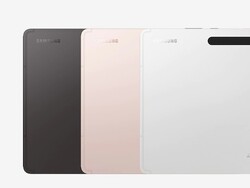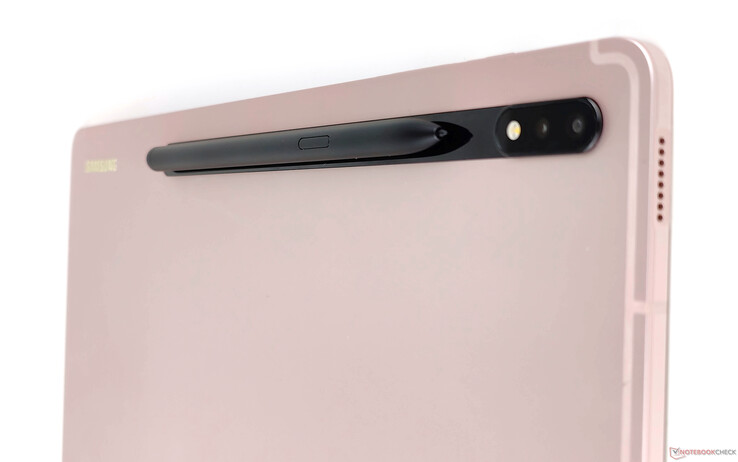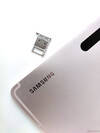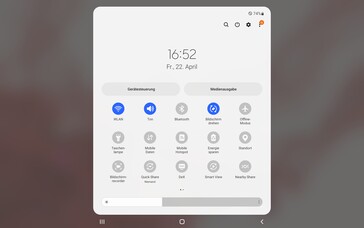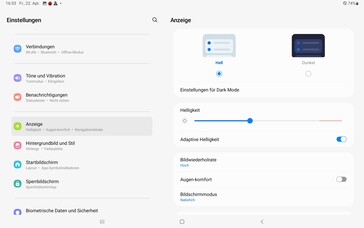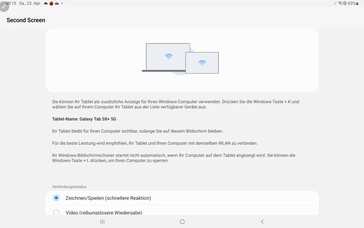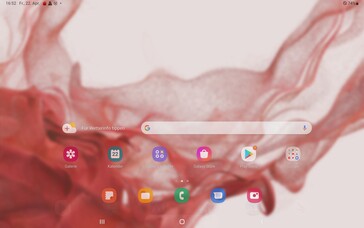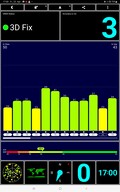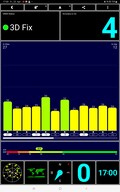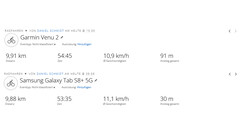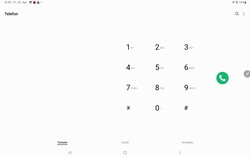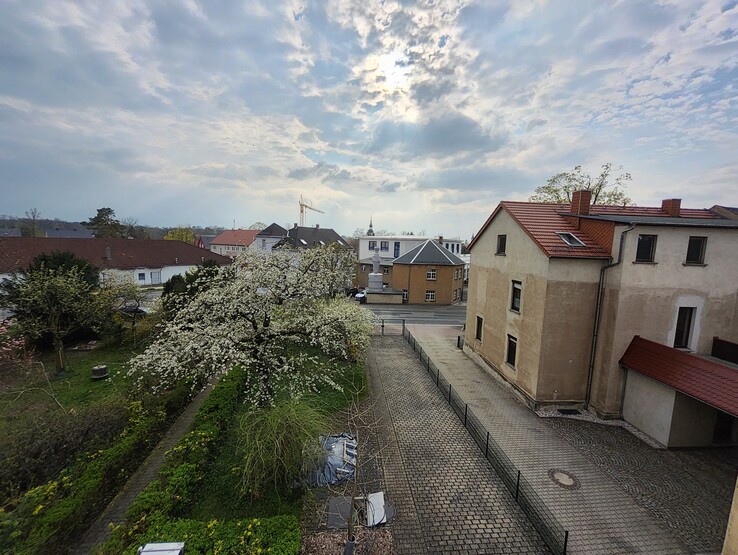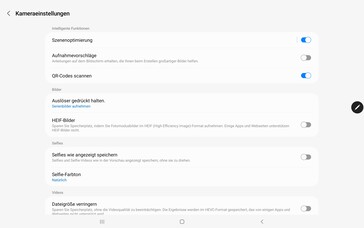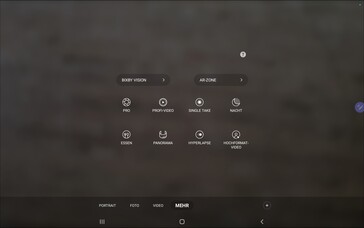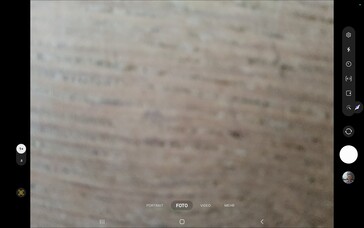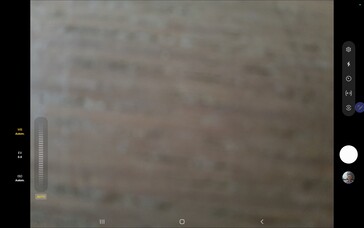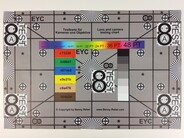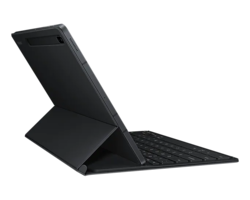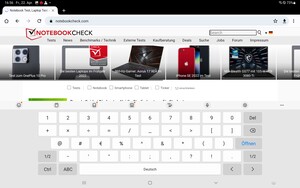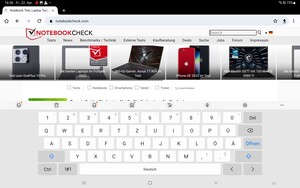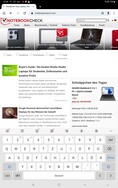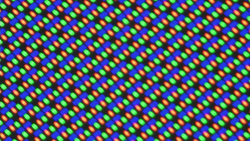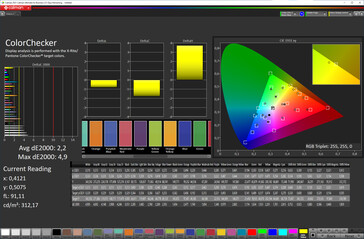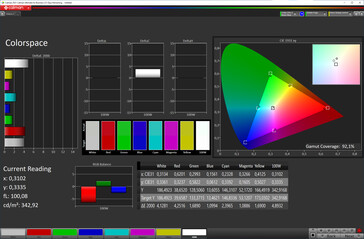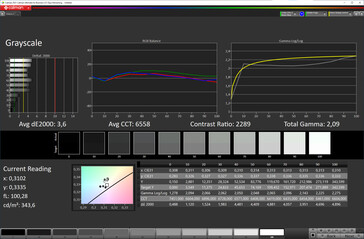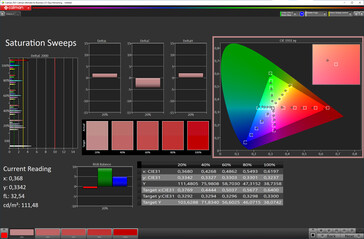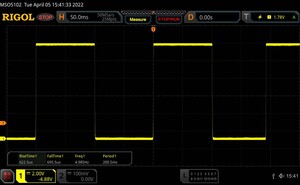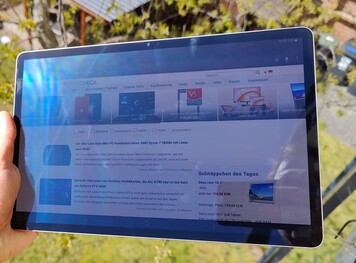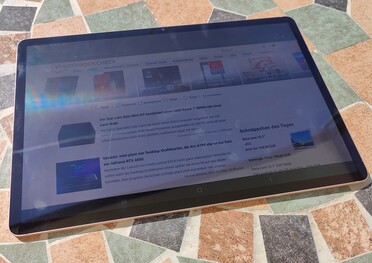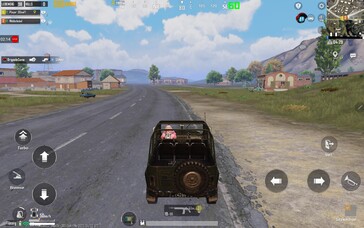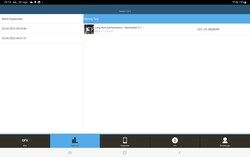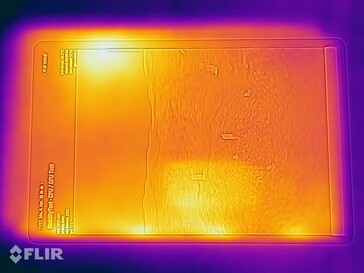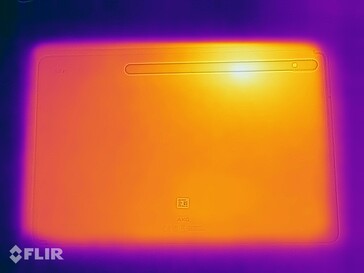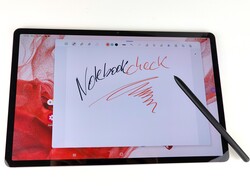Samsung Galaxy Tab S8+ (Plus): 5G Tablet with Large OLED Display and 5 Years of Updates
Just like last year this year’s “normal” Galaxy Tab S8 is accompanied by a larger 12.4-inch Plus model with a Super AMOLED display promising much lower black levels and response times than the 11-inch model’s IPS display. Running at a native resolution of 2800 x 1752 and a refresh rate of 120 Hz it is identical to the Galaxy Tab S7 Plus. Depending on model you get either 128 or 256 GB of internal storage.
| Galaxy Tab S8+ | 128 GB | Wi-Fi | $899 |
|---|---|---|---|
| Galaxy Tab S8+ | 128 GB | 5G | currently not available in North America |
| Galaxy Tab S8+ | 256 GB | Wi-Fi | $979 |
| Galaxy Tab S8+ | 256 GB | 5G | currently not available in North America |
The SoC is supplied by Qualcomm, a Snapdragon 8 Gen1. Like before it has access to just 8 GB of RAM. At the rear we find a 13 MP main sensor as well as a 5 MP ultra-wide-angle lens.
Potential Competitors in Comparison
Rating | Date | Model | Weight | Height | Size | Resolution | Best Price |
|---|---|---|---|---|---|---|---|
| 88.3 % | 04/2022 | Samsung Galaxy Tab S8+ 5G SD 8 Gen 1, Adreno 730 | 572 g | 5.7 mm | 12.40" | 2800x1752 | |
| 88.1 % | 10/2020 | Samsung Galaxy Tab S7 Plus SD 865+ (Plus), Adreno 650 | 575 g | 5.7 mm | 12.40" | 2800x1752 | |
| 89.1 % | 03/2022 | Lenovo Tab P12 Pro SD 870, Adreno 650 | 565 g | 5.6 mm | 12.60" | 2560x1600 | |
| 88.8 % | 10/2021 | Huawei MatePad Pro 12.6 2021 Kirin 9000E, Mali-G78 MP22 | 609 g | 6.7 mm | 12.60" | 2560x1600 | |
| 86.2 % | 09/2021 | Lenovo Yoga Tab 13 SD 870, Adreno 650 | 830 g | 6.2 mm | 13.00" | 2160x1350 | |
| 91.3 % | 06/2021 | Apple iPad Pro 12.9 2021 A2378 M1, M1 8-Core GPU | 682 g | 6.4 mm | 12.90" | 2732x2048 |
Case – 5G Tablet without Notch
Due to its very large 12.4-inch OLED display the Galaxy Tab S8 Plus cannot be held comfortable in one hand. At less than 6 mm it is however very thin, and it weighs more than 100 g (3.5 oz) less than the iPad Pro 12.9 and less than its immediate predecessor. Apart from the side buttons and the SIM tray all metal components are made of Samsung’s new alloy dubbed “Armor Aluminum”. It promises not just a low weight but also increased scratch resistance and decreased flex.
At the front of the Galaxy Tab S8 Plus we find Gorilla Glass Victus+, and the case is available in three different colors. Thanks to its matte coating it is mostly fingerprint-resistant, and it leaves an excellent visual and haptic impression. The physical buttons offer a very nice accentuation point and sit firmly inside their respective cavities. Ergonomics, on the other hand, are less than ideal due to the tablet’s squared and edgy design as well as the noticeable transition between the metal frame and rear.
The included S Pen can be attached magnetically at the top of the case as well as the rear. The magnetic stripe at the rear is covered in high-gloss Gorilla Glass Victus+ and charges the S Pen wirelessly while attached. Unfortunately, the S8 Plus is not IP certified against ingress of dust and water.
Connectivity – Samsung Galaxy Tab S8 Plus without 3.5-mm Headphone Jack
As expected of tablets in this price range the Galaxy Tab S8 Plus features a variety if interesting connectivity features adding true multimedia expertise to its inherent professional use nature. Take for example the quad-speaker array made by AKG, the optical fingerprint reader, and the support for microSD cards of up to 1 TB including support for the exFAT file system thanks to which you can save files larger than 4 GB on the microSD card.
In terms of productivity the Galaxy Tab S8 Plus features the regular connector for the magnetically attached Samsung Book Cover keyboard as well as a USB 3.2 Gen 1 port with transfer speeds of up to 5 Gbit/s. It also supports wired display output to connect to external monitors as well as wireless display output via Miracast.
In addition to all this the Galaxy Tab S8 Plus can also be used as a secondary screen. It requires a Windows computer running at least Windows 10 and supports two different output modes, drawing/gaming and video.
microSD Card Reader
When benchmarked with our Angelbird V60 reference card the Galaxy Tab S8 Plus’s microSD card reader delivered adequate performance. It may not have been as fast as the Huawei MatePad Pro 12.6 but at 54 MB/s still more than decent. CPCT performance was also sufficient.
| SD Card Reader - average JPG Copy Test (av. of 3 runs) | |
| Huawei MatePad Pro 12.6 2021 (Huawei NanoMemory) | |
| Samsung Galaxy Tab S8+ 5G (Angelbird AV Pro V60) | |
| Lenovo Tab P12 Pro (Angelbird V60) | |
Cross Platform Disk Test (CPDT)
Software – Samsung Tablet with Android 12
In addition to hardware upgrades Samsung has also upped its game in regard to software support. The Galaxy Tab S8 series of tablets will receive up to four major Android updates as well as up to five years of security updates. No other Android tablet manufacturer can offer anything alike.
As is typical for Samsung the operating system comes with Samsung’s own One UI 4.1 user interface including Samsung’s Bixby assistant. At the time of writing our tablet was running Android 12 with security patches as of March 2022. Samsung also provides a feature called Knows Vault Platform consisting of a secure chip to protect and isolate sensitive data such as passwords or biometric information from the main operating system.
In combination with Samsung’s DeX interface the Galaxy Tab S8 Plus supports transparent app windows and display mirroring on external displays. In addition, Samsung’s own Smart Switch feature enables users to access data on other Samsung Galaxy devices running at least One UI 3.1.
Communication and GNSS – Galaxy Tab S8+ with Wi-Fi 6E
The Galaxy Tab S8 Plus is one of the first Android tablets supporting Wi-Fi 6E utilizing the 6 GHz band for Wi-Fi transfers. In addition, the tablet also supports Samsung’s multi-user MIMO ensuring very high and relatively consistent data rates. When connected to our Asus ROG Rapture GT-AXE11000 router the Galaxy Tab S8 Plus achieved transfer speeds of more than 1,800 Mbps. When connected to a normal Wi-Fi 6 router utilizing the 2.4 and 5 GHz band it still managed very high data rates of more than 800 Mbps on average.
Our review unit was equipped with the optional Snapdragon X65 5G modem with Bluetooth 5.2, which supports 5G frequencies as well as a total of 19 LTE bands. Like the Lenovo Tab P12 Pro it most likely features an NFC chip but does not support wireless payment systems. Instead, the NFC chip is used for charging and connecting to the Samsung S Pen.
| Networking | |
| iperf3 transmit AX12 | |
| Huawei MatePad Pro 12.6 2021 | |
| Lenovo Yoga Tab 13 | |
| Apple iPad Pro 12.9 2021 A2378 | |
| Samsung Galaxy Tab S7 Plus | |
| iperf3 receive AX12 | |
| Huawei MatePad Pro 12.6 2021 | |
| Lenovo Yoga Tab 13 | |
| Apple iPad Pro 12.9 2021 A2378 | |
| Samsung Galaxy Tab S7 Plus | |
| iperf3 receive AXE11000 | |
| Samsung Galaxy Tab S8+ 5G | |
| Lenovo Tab P12 Pro | |
| iperf3 transmit AXE11000 | |
| Samsung Galaxy Tab S8+ 5G | |
| Lenovo Tab P12 Pro | |
| iperf3 transmit AXE11000 6GHz | |
| Samsung Galaxy Tab S8+ 5G | |
| iperf3 receive AXE11000 6GHz | |
| Samsung Galaxy Tab S8+ 5G | |
Regardless of the fact that a 12.4-inch tablet may not be the ideal satnav device we tested its GPS capabilities by taking it out, recording the track, and comparing it to that of a professional Garmin Venu 2. The results were very good, and the Galaxy Tab S8 Plus’s recorded track showed almost no deviations from the Venu 2’s. If you really and truly want a ginormous tablet in your car for navigation the 5G-equipped S8+ is your device.
Supported positioning services include GPS (L1), Galileo (E1), BeiDou, GLONASS, and SBAS. Indoor satellite lock is obtained very quickly at an accuracy of around 4 m.
Telephony and Call Quality – Tab S8+ supports Telephony
While the Galaxy Tab S8 Plus may not be used as phone by most people it can be, and with its three microphones and Samsung’s new auto framing technology it is equipped very well for this purpose. During video conference calls, the auto framing feature will zoom in on the speaker. Regular phone calls require a nano SIM card and work very well over the tablet’s built-in speakerphone. Our conversational partners had no issues understanding us in even at a distance of 50 cm from the tablet in quiet environments with low ambient noise.
Cameras – 5G Tablet with Dual-Camera Array
Unlike the Galaxy Tab S7 Plus the 12.4-inch Galaxy Tab S8 Plus received a minor upgrade for the front-facing camera over its non-Plus sibling and features a 12 MP sensor with a much wider 120-degree field of view akin to a traditional ultra-wide-angle lens. The camera mounted above the display features an aperture of f/2.4 and produced more than usable results in bright daylight. Having said that the bokeh effect in portrait mode is not particularly reliable and focus is not the best either.
At the rear, Samsung’s premium tablet features the same dual-camera array found on its predecessor, a 13 MP f/2.0 main camera accompanied by a secondary 5 MP ultra-wide-angle lens. The main camera’s colors, details, and dynamic range are very good and more than usable for social media posts. When analyzed under normalized and defined conditions we found no major color deviations of Delta E > 15.
The question of whether or not a tablet needs a rear-facing camera is highly contested but let it be said that taking photo of large documents using the S8 Plus’s wide-angle lens worked flawlessly. Apart from that the 5 MP lens produces a large number of artefacts and a low overall level of sharpness, particularly towards the edges where details tend to blur and disappear entirely.
Both the main and front-facing camera record videos in UHD quality with up to 30 FPS. The ultra-wide-angle lens does not support 4K video recording at all. The tablet supports switching between the cameras while recording although that feature is limited to the main 13 MP camera and the front-facing camera.
Image Comparison
Choose a scene and navigate within the first image. One click changes the position on touchscreens. One click on the zoomed-in image opens the original in a new window. The first image shows the scaled photograph of the test device.
WeitwinkelWeitwinkelLow Light5x-ZoomUltraweitwinkel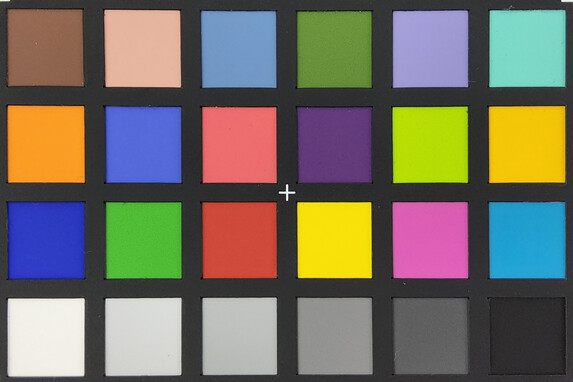
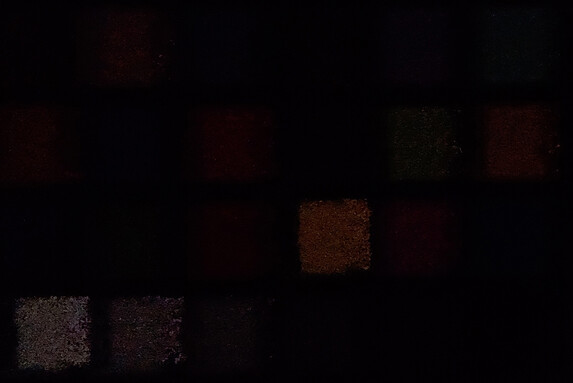
Accessories and Warranty – Samsung Galaxy Tab S8 Plus without Charger
European models of Samsung’s premium tablet come with a full 24 months of limited warranty while devices sold in the US are once again limited to just 12 months. Warranty extensions are available in select markets, and prices as well as conditions differ. For example, Samsung Care+ in Europe costs 99 Euros and includes accidental damage including display or water damage for up to two repairs or replacements during the covered period with a deductible of 59 Euros per incident.
A power supply is no longer included in the box. Instead, we find a USB cable, the S Pen, and the usual paperwork. The 45 W fast charger will have to be purchased separately, and prices and availability vary. Other optional accessories include the Book Cover Keyboard or the Book Cover Keyboard Slim.
Input Devices & Handling – Galaxy Tab S8+ with Fingerprint Reader
Touch input is registered very quickly and precisely on the 12.4-inch Gorilla Glass Victus+-covered OLED display. Scrolling and One UI user interface animations are buttery smooth thanks to its high refresh rate of 120 Hz. The 8 g (0.28 oz) S Pen supports the usual 4,096 levels of pressure sensitivity and can be used to take handwritten notes with the Galaxy Tab S8 Plus. It lies firmly and comfortably in hand, and we found almost no input lag even with fast movements. According to Samsung, input latency was reduced from 9 ms on the Galaxy Tab S7 Plus to less than 2.8 ms on the new model. Slow movement allows for very precise and straight lines. The tablet supports gesture input, such as for example S Pen actions that can be configured in the Gallery app.
The optical fingerprint reader sits underneath the OLED panel and works reliably but somewhat lethargic overall. Unlocking the device via face recognition utilizing the tablet’s front-facing camera is also supported. Both speed and reliability of the comparatively insecure 2D face recognition feature were decent.
Display – Samsung Tablet with OLED
The Galaxy Tab S8 Plus’s 16:10 OLED display runs at a native resolution of 2800 x 1572 pixels with a refresh rate of 120 Hz and, according to Samsung, support for HDR10. However, we found that peak brightness in the APL18 test with evenly distributed dark and bright surfaces was just 601 nits and thus not particularly high. High-contrast effects are thus somewhat lacking on the Galaxy Tab S8 Plus’s display.
When looking at the panel in detail we found that it is most likely identical to the Tab S7 Plus's. Peak brightness on a pure white background was very similar to and just as mediocre as last year’s S7 Plus’s, and the new display is only ever so slightly brighter than the Galaxy Tab S7 Plus’s.
As is common for OLED panels Samsung uses PWM for display brightness regulation. At brightness levels of 33 % and below we found it to fluctuate at a frequency of 120 to 245 Hz and a much more even amplitude around 120 Hz at higher levels of brightness. Due to this low frequency sensitive users might suffer, as is the case with pretty much every OLED panel. Even the Mini LED display on the Apple iPad Pro 12.9 flickers at a very high frequency.
| |||||||||||||||||||||||||
Brightness Distribution: 97 %
Center on Battery: 459 cd/m²
Contrast: ∞:1 (Black: 0 cd/m²)
ΔE Color 2.2 | 0.5-29.43 Ø5
ΔE Greyscale 3.6 | 0.57-98 Ø5.3
92.1% sRGB (Calman 2D)
Gamma: 2.09
| Samsung Galaxy Tab S8+ 5G Super AMOLED, 2800x1752, 12.40 | Samsung Galaxy Tab S7 Plus Super AMOLED, 2800x1752, 12.40 | Lenovo Tab P12 Pro AMOLED, 2560x1600, 12.60 | Huawei MatePad Pro 12.6 2021 OLED, 2560x1600, 12.60 | Lenovo Yoga Tab 13 IPS, 2160x1350, 13.00 | Apple iPad Pro 12.9 2021 A2378 IPS mini-LED, 2732x2048, 12.90 | |
|---|---|---|---|---|---|---|
| Screen | 3% | -3% | 6% | -29% | 16% | |
| Brightness middle | 459 | 441 -4% | 552 20% | 383 -17% | 404 -12% | 620 35% |
| Brightness | 462 | 447 -3% | 555 20% | 390 -16% | 374 -19% | 612 32% |
| Brightness Distribution | 97 | 98 1% | 97 0% | 94 -3% | 85 -12% | 96 -1% |
| Black Level * | 0.4 | |||||
| Colorchecker dE 2000 * | 2.2 | 2.4 -9% | 3.43 -56% | 2.1 5% | 2.94 -34% | 1.8 18% |
| Colorchecker dE 2000 max. * | 4.9 | 4.1 16% | 7.25 -48% | 3.7 24% | 8.74 -78% | 4.9 -0% |
| Greyscale dE 2000 * | 3.6 | 2.9 19% | 2 44% | 2.1 42% | 4.3 -19% | 3.1 14% |
| Gamma | 2.09 105% | 2.01 109% | 2.253 98% | 2.14 103% | 2.14 103% | 2214 0% |
| CCT | 6558 99% | 6469 100% | 6417 101% | 6258 104% | 7084 92% | 6892 94% |
| Contrast | 1010 |
* ... smaller is better
Screen Flickering / PWM (Pulse-Width Modulation)
| Screen flickering / PWM detected | 245.4 Hz | ||
The display backlight flickers at 245.4 Hz (worst case, e.g., utilizing PWM) . The frequency of 245.4 Hz is relatively low, so sensitive users will likely notice flickering and experience eyestrain at the stated brightness setting and below. In comparison: 53 % of all tested devices do not use PWM to dim the display. If PWM was detected, an average of 17844 (minimum: 5 - maximum: 3846000) Hz was measured. | |||
Fixed zoom with various brightness settings
Two color modes, Natural and Vivid, are available in software, and manual white balance adjustment is only supported on the latter. We tested and evaluated the Galaxy Tab S8 Plus’s color accuracy using a photospectrometer in combination with the CalMAN software.
When set to Natural using the smaller sRGB color space we found only slightly elevated Delta E deviations of more than three. However, these will not be noticeable in day-to-day use.
Display Response Times
| ↔ Response Time Black to White | ||
|---|---|---|
| 1.318 ms ... rise ↗ and fall ↘ combined | ↗ 0.6225 ms rise | |
| ↘ 0.6955 ms fall | ||
| The screen shows very fast response rates in our tests and should be very well suited for fast-paced gaming. In comparison, all tested devices range from 0.1 (minimum) to 240 (maximum) ms. » 3 % of all devices are better. This means that the measured response time is better than the average of all tested devices (21.5 ms). | ||
| ↔ Response Time 50% Grey to 80% Grey | ||
| 1.383 ms ... rise ↗ and fall ↘ combined | ↗ 0.7095 ms rise | |
| ↘ 0.6735 ms fall | ||
| The screen shows very fast response rates in our tests and should be very well suited for fast-paced gaming. In comparison, all tested devices range from 0.2 (minimum) to 636 (maximum) ms. » 3 % of all devices are better. This means that the measured response time is better than the average of all tested devices (33.7 ms). | ||
Outdoors, the Galaxy Tab S8 Plus remains well readable in the shade although its reflections can be bothersome. Direct sunlight managed to overwhelm its displays capabilities to overpower the reflections caused by its reflective coating. Should you intend to use this 12.4-inch tablet outdoors you will have to leave automatic brightness enabled as disabling the ambient light sensor reduces maximum brightness to just 361 nits.
Viewing angles are very good. Colors remain accurate and we found almost no decrease in brightness even at extreme angles.
Performance – Samsung Galaxy Tab S8 Plus with Qualcomm SoC
Samsung’s processor of choice for the Tab S8-series is Qualcomm’s top of the line mobile SoC, the Snapdragon 8 Gen. 1, a 4-nm SoC based on ARM’s v9 architecture. Its Kyro CPU is comprised of three CPU clusters, one Prime core (Cortex X2), three performance cores (Cortex A710), and four efficiency cores (Cortex A510). Graphics are handled by an integrated Adreno 730.
In everyday use, the tablet left a fairly good impression, and we did not encounter any major lag during our review period. Nevertheless, we find it impossible to understand why Samsung equips its flagship tablet with no more than 8 GB of RAM. A 12 GB option would have been an absolute must. Application load times are short, although we would have wished for a better performing UFS 3.1 storage when it comes to small chunks of data.
The Galaxy Tab S8 Plus outperformed its predecessor, which was powered by an SoC of yesteryear, by significant margins in our CPU benchmarks. This also explains the relatively large gap in our Geekbench results between the Galaxy Tab S8 Plus and the Snapdragon 870-based Lenovo tablet. The latter is based on the same architecture as the Snapdragon 865 Plus.
The Galaxy Tab S8 Plus’s Snapdragon 8 Gen. 1 performed even better in our GPU-bound benchmarks thanks to its integrated Adreno 730, and it outperformed its predecessor’s Adreno 650 by up to 60 %. In the 3DMark Wild Life test, it virtually destroyed its predecessor and outperformed it by a factor of two.
GFXBench (DX / GLBenchmark) 2.7: T-Rex Onscreen | 1920x1080 T-Rex Offscreen
GFXBench 3.0: on screen Manhattan Onscreen OGL | 1920x1080 1080p Manhattan Offscreen
GFXBench 3.1: on screen Manhattan ES 3.1 Onscreen | 1920x1080 Manhattan ES 3.1 Offscreen
GFXBench: on screen Car Chase Onscreen | 1920x1080 Car Chase Offscreen | on screen Aztec Ruins High Tier Onscreen | 2560x1440 Aztec Ruins High Tier Offscreen | on screen Aztec Ruins Normal Tier Onscreen | 1920x1080 Aztec Ruins Normal Tier Offscreen
| 3DMark / Wild Life Extreme Unlimited | |
| Apple iPad Pro 12.9 2021 A2378 | |
| Samsung Galaxy Tab S8+ 5G | |
| Huawei MatePad Pro 12.6 2021 | |
| Lenovo Tab P12 Pro | |
| Lenovo Yoga Tab 13 | |
| 3DMark / Wild Life Extreme | |
| Apple iPad Pro 12.9 2021 A2378 | |
| Samsung Galaxy Tab S8+ 5G | |
| Huawei MatePad Pro 12.6 2021 | |
| Lenovo Tab P12 Pro | |
| Lenovo Yoga Tab 13 | |
| 3DMark / Wild Life Unlimited Score | |
| Apple iPad Pro 12.9 2021 A2378 | |
| Samsung Galaxy Tab S8+ 5G | |
| Huawei MatePad Pro 12.6 2021 | |
| Lenovo Tab P12 Pro | |
| Lenovo Yoga Tab 13 | |
| 3DMark / Wild Life Score | |
| Apple iPad Pro 12.9 2021 A2378 | |
| Samsung Galaxy Tab S8+ 5G | |
| Huawei MatePad Pro 12.6 2021 | |
| Lenovo Tab P12 Pro | |
| Lenovo Yoga Tab 13 | |
| GFXBench (DX / GLBenchmark) 2.7 / T-Rex Onscreen | |
| Apple iPad Pro 12.9 2021 A2378 | |
| Lenovo Tab P12 Pro | |
| Samsung Galaxy Tab S8+ 5G | |
| Samsung Galaxy Tab S7 Plus | |
| Huawei MatePad Pro 12.6 2021 | |
| Lenovo Yoga Tab 13 | |
| GFXBench (DX / GLBenchmark) 2.7 / T-Rex Offscreen | |
| Apple iPad Pro 12.9 2021 A2378 | |
| Samsung Galaxy Tab S8+ 5G | |
| Huawei MatePad Pro 12.6 2021 | |
| Lenovo Tab P12 Pro | |
| Lenovo Yoga Tab 13 | |
| Samsung Galaxy Tab S7 Plus | |
| GFXBench 3.0 / Manhattan Onscreen OGL | |
| Apple iPad Pro 12.9 2021 A2378 | |
| Samsung Galaxy Tab S8+ 5G | |
| Lenovo Tab P12 Pro | |
| Samsung Galaxy Tab S7 Plus | |
| Huawei MatePad Pro 12.6 2021 | |
| Lenovo Yoga Tab 13 | |
| GFXBench 3.0 / 1080p Manhattan Offscreen | |
| Apple iPad Pro 12.9 2021 A2378 | |
| Samsung Galaxy Tab S8+ 5G | |
| Huawei MatePad Pro 12.6 2021 | |
| Lenovo Tab P12 Pro | |
| Lenovo Yoga Tab 13 | |
| Samsung Galaxy Tab S7 Plus | |
| GFXBench 3.1 / Manhattan ES 3.1 Onscreen | |
| Apple iPad Pro 12.9 2021 A2378 | |
| Lenovo Yoga Tab 13 | |
| Samsung Galaxy Tab S8+ 5G | |
| Huawei MatePad Pro 12.6 2021 | |
| Lenovo Tab P12 Pro | |
| Samsung Galaxy Tab S7 Plus | |
| GFXBench 3.1 / Manhattan ES 3.1 Offscreen | |
| Apple iPad Pro 12.9 2021 A2378 | |
| Samsung Galaxy Tab S8+ 5G | |
| Huawei MatePad Pro 12.6 2021 | |
| Lenovo Tab P12 Pro | |
| Lenovo Yoga Tab 13 | |
| Samsung Galaxy Tab S7 Plus | |
| GFXBench / Car Chase Onscreen | |
| Apple iPad Pro 12.9 2021 A2378 | |
| Samsung Galaxy Tab S8+ 5G | |
| Lenovo Yoga Tab 13 | |
| Huawei MatePad Pro 12.6 2021 | |
| Lenovo Tab P12 Pro | |
| Samsung Galaxy Tab S7 Plus | |
| GFXBench / Car Chase Offscreen | |
| Apple iPad Pro 12.9 2021 A2378 | |
| Samsung Galaxy Tab S8+ 5G | |
| Huawei MatePad Pro 12.6 2021 | |
| Lenovo Tab P12 Pro | |
| Lenovo Yoga Tab 13 | |
| Samsung Galaxy Tab S7 Plus | |
| GFXBench / Aztec Ruins High Tier Onscreen | |
| Apple iPad Pro 12.9 2021 A2378 | |
| Samsung Galaxy Tab S8+ 5G | |
| Huawei MatePad Pro 12.6 2021 | |
| Lenovo Yoga Tab 13 | |
| Lenovo Tab P12 Pro | |
| Samsung Galaxy Tab S7 Plus | |
| GFXBench / Aztec Ruins High Tier Offscreen | |
| Apple iPad Pro 12.9 2021 A2378 | |
| Samsung Galaxy Tab S8+ 5G | |
| Huawei MatePad Pro 12.6 2021 | |
| Samsung Galaxy Tab S7 Plus | |
| Lenovo Yoga Tab 13 | |
| Lenovo Tab P12 Pro | |
| GFXBench / Aztec Ruins Normal Tier Onscreen | |
| Apple iPad Pro 12.9 2021 A2378 | |
| Huawei MatePad Pro 12.6 2021 | |
| Samsung Galaxy Tab S8+ 5G | |
| Lenovo Yoga Tab 13 | |
| Lenovo Tab P12 Pro | |
| Samsung Galaxy Tab S7 Plus | |
| GFXBench / Aztec Ruins Normal Tier Offscreen | |
| Apple iPad Pro 12.9 2021 A2378 | |
| Samsung Galaxy Tab S8+ 5G | |
| Huawei MatePad Pro 12.6 2021 | |
| Lenovo Yoga Tab 13 | |
| Samsung Galaxy Tab S7 Plus | |
| Lenovo Tab P12 Pro | |
| Jetstream 2 - Total Score | |
| Apple iPad Pro 12.9 2021 A2378 (Safari 14.1.1) | |
| Lenovo Tab P12 Pro (Chrome 98) | |
| Average Qualcomm Snapdragon 8 Gen 1 (72.8 - 134.6, n=16) | |
| Samsung Galaxy Tab S8+ 5G (Samsung Browser V16) | |
| Lenovo Yoga Tab 13 (Chrome 92) | |
| Average of class Tablet (19.9 - 236, n=61, last 2 years) | |
| Huawei MatePad Pro 12.6 2021 (Huawei Browser 11.1.4.302) | |
| Samsung Galaxy Tab S7 Plus (Samsung Browser 12.1) | |
| JetStream 1.1 - Total Score | |
| Apple iPad Pro 12.9 2021 A2378 | |
| Samsung Galaxy Tab S8+ 5G | |
| Samsung Galaxy Tab S8+ 5G | |
| Average Qualcomm Snapdragon 8 Gen 1 (121.9 - 237, n=11) | |
| Lenovo Tab P12 Pro (Chrome 98) | |
| Lenovo Yoga Tab 13 (Chrome 92) | |
| Samsung Galaxy Tab S7 Plus (Samsung Browser 12.1) | |
| Huawei MatePad Pro 12.6 2021 (Huawei Browser 11.1.4.302) | |
| Average of class Tablet (57.3 - 135.7, n=5, last 2 years) | |
| WebXPRT 3 - Overall | |
| Apple iPad Pro 12.9 2021 A2378 (Safari 14.1.1) | |
| Lenovo Tab P12 Pro (Chrome 98) | |
| Samsung Galaxy Tab S8+ 5G (Samsung Browser V16) | |
| Average Qualcomm Snapdragon 8 Gen 1 (79 - 193, n=15) | |
| Lenovo Yoga Tab 13 (Chrome 92) | |
| Samsung Galaxy Tab S7 Plus (Samsung Browser 12.1) | |
| Average of class Tablet (34 - 342, n=43, last 2 years) | |
| Huawei MatePad Pro 12.6 2021 (Huawei Browser 11.1.4.302) | |
| Speedometer 2.0 - Result | |
| Apple iPad Pro 12.9 2021 A2378 (Safari 14.1.1) | |
| Average Qualcomm Snapdragon 8 Gen 1 (64.4 - 129.3, n=16) | |
| Samsung Galaxy Tab S8+ 5G (Samsung Browser V16) | |
| Average of class Tablet (14.7 - 376, n=54, last 2 years) | |
| Lenovo Yoga Tab 13 (Chome 92) | |
| Huawei MatePad Pro 12.6 2021 (Huawei Browser 11.1.4.302) | |
| Samsung Galaxy Tab S7 Plus (Samsung Browser 12.1) | |
| Lenovo Tab P12 Pro (Chrome 98) | |
| Octane V2 - Total Score | |
| Apple iPad Pro 12.9 2021 A2378 (Safari 14.1.1) | |
| Average Qualcomm Snapdragon 8 Gen 1 (27730 - 50626, n=17) | |
| Samsung Galaxy Tab S8+ 5G (Samsung Browser V16) | |
| Lenovo Tab P12 Pro (Chrome 98) | |
| Lenovo Yoga Tab 13 (Chrome 92) | |
| Samsung Galaxy Tab S7 Plus (Samsung Browser 12.1) | |
| Huawei MatePad Pro 12.6 2021 (Huawei Browser 11.1.4.302) | |
| Average of class Tablet (2672 - 74614, n=74, last 2 years) | |
| Mozilla Kraken 1.1 - Total | |
| Average of class Tablet (451 - 34733, n=61, last 2 years) | |
| Samsung Galaxy Tab S7 Plus (Samsung Browser 12.1) | |
| Huawei MatePad Pro 12.6 2021 (Huawei Browser 11.1.4.302) | |
| Lenovo Yoga Tab 13 (Chrome 92) | |
| Lenovo Tab P12 Pro (Chrome 98) | |
| Average Qualcomm Snapdragon 8 Gen 1 (814 - 1440, n=16) | |
| Samsung Galaxy Tab S8+ 5G (Samsung Browser V16) | |
| Apple iPad Pro 12.9 2021 A2378 (Safari 14.1.1) | |
* ... smaller is better
| Samsung Galaxy Tab S8+ 5G | Samsung Galaxy Tab S7 Plus | Lenovo Tab P12 Pro | Huawei MatePad Pro 12.6 2021 | Lenovo Yoga Tab 13 | Average 256 GB UFS 3.1 Flash | Average of class Tablet | |
|---|---|---|---|---|---|---|---|
| AndroBench 3-5 | -11% | -10% | 39% | -11% | 16% | -40% | |
| Sequential Read 256KB | 1726.34 | 1675 -3% | 1782 3% | 2031 18% | 1431 -17% | 1759 ? 2% | 847 ? -51% |
| Sequential Write 256KB | 1374.65 | 732 -47% | 758 -45% | 1559 13% | 711 -48% | 1130 ? -18% | 530 ? -61% |
| Random Read 4KB | 202.35 | 230.1 14% | 232.5 15% | 310 53% | 249.1 23% | 282 ? 39% | 167.7 ? -17% |
| Random Write 4KB | 218.02 | 205 -6% | 189.2 -13% | 369.7 70% | 215.2 -1% | 309 ? 42% | 151.6 ? -30% |
Gaming – Galaxy Tablet with 116 FPS
We use GameBench to record the exact frame rates per second achieved by the Galaxy Tab S8 Plus with a selection of Android games. PUBG Mobile ran at 40 FPS in UHD resolution with maximum details. Lowering the details resulted in 60 FPS.
Games that support higher refresh rate displays, such as Armajet, will achieve frame rates close to the display’s theoretical maximum for short periods of time. We recorded a maximum of 116 FPS on the Galaxy Tab S8 Plus.
Emissions – Galaxy Tab S8+ Remains Cool
Temperature
The case remains comparatively cool even under sustained load. Running GFXBench we evaluated how well the Qualcomm SoC performed under high GPU load. And while the Galaxy Tab S8 Plus successfully completed the OpenGL 3.1 battery test the results were not recorded.
We also ran 3DMark’s stress test on the Galaxy Tab S8 Plus, and just like Snapdragon 8 Gen. 1-equipped smartphones the Tab S8+’s performance was inconsistent over time.
3DMark Wild Life Stress Test
(+) The maximum temperature on the upper side is 30.6 °C / 87 F, compared to the average of 33.8 °C / 93 F, ranging from 20.7 to 53.2 °C for the class Tablet.
(+) The bottom heats up to a maximum of 30.7 °C / 87 F, compared to the average of 33.3 °C / 92 F
(+) In idle usage, the average temperature for the upper side is 27.2 °C / 81 F, compared to the device average of 30 °C / 86 F.
Speakers
The Galaxy Tab S8 Plus features a total of four speakers, optimized by AKG. We liked their overall quality albeit bass representation as fairly weak. Nevertheless, the Tab S8 Plus’s overall soundscape was linear in mids and highs, and its maximum volume of 88 dB(A) more than loud enough.
Some users will certainly miss the Galaxy Tab S8 Plus’s missing 3.5-mm audio jack and will have to make do with a USB-C dongle instead. Unfortunately, Samsung does not include a 3.5-mm dongle in the box, which means it must be purchased separately if required. Wireless audio output over Bluetooth 5.2 supports SBC, AAC, aptX, and LDAC. We would have wished for a wider support of wireless audio codecs.
Samsung Galaxy Tab S8+ 5G audio analysis
(+) | speakers can play relatively loud (88.2 dB)
Bass 100 - 315 Hz
(-) | nearly no bass - on average 17.6% lower than median
(±) | linearity of bass is average (8.4% delta to prev. frequency)
Mids 400 - 2000 Hz
(+) | balanced mids - only 3.1% away from median
(+) | mids are linear (5% delta to prev. frequency)
Highs 2 - 16 kHz
(+) | balanced highs - only 2.8% away from median
(+) | highs are linear (4.6% delta to prev. frequency)
Overall 100 - 16.000 Hz
(+) | overall sound is linear (12.2% difference to median)
Compared to same class
» 11% of all tested devices in this class were better, 4% similar, 85% worse
» The best had a delta of 7%, average was 23%, worst was 129%
Compared to all devices tested
» 7% of all tested devices were better, 2% similar, 91% worse
» The best had a delta of 4%, average was 25%, worst was 134%
Samsung Galaxy Tab S7 Plus audio analysis
(+) | speakers can play relatively loud (87.2 dB)
Bass 100 - 315 Hz
(±) | reduced bass - on average 12.9% lower than median
(±) | linearity of bass is average (10.3% delta to prev. frequency)
Mids 400 - 2000 Hz
(+) | balanced mids - only 3.8% away from median
(+) | mids are linear (2.7% delta to prev. frequency)
Highs 2 - 16 kHz
(+) | balanced highs - only 2.9% away from median
(+) | highs are linear (5.5% delta to prev. frequency)
Overall 100 - 16.000 Hz
(+) | overall sound is linear (10.9% difference to median)
Compared to same class
» 6% of all tested devices in this class were better, 1% similar, 93% worse
» The best had a delta of 7%, average was 23%, worst was 129%
Compared to all devices tested
» 4% of all tested devices were better, 1% similar, 94% worse
» The best had a delta of 4%, average was 25%, worst was 134%
Energy Management – Samsung Galaxy Tab S8+ with a 10,090 mAh Battery
Power Consumption
The 10,090 mAh battery can be charged with up to 45 W. The optional 45 W power supply will charge the tablet from 0 to 100 % in around 90 minutes, according to Samsung.
For a tablet equipped with a Snapdragon 8 Gen. 1 we found its maximum power consumption to be at acceptable levels. However, its idle power consumption leaves room for improvement.
| Off / Standby | |
| Idle | |
| Load |
|
| Samsung Galaxy Tab S8+ 5G 10090 mAh | Samsung Galaxy Tab S7 Plus 10090 mAh | Lenovo Tab P12 Pro 10200 mAh | Huawei MatePad Pro 12.6 2021 10050 mAh | Lenovo Yoga Tab 13 10000 mAh | Apple iPad Pro 12.9 2021 A2378 mAh | |
|---|---|---|---|---|---|---|
| Power Consumption | 10% | 13% | -85% | -13% | -73% | |
| Idle Minimum * | 3.08 | 2.41 22% | 2.2 29% | 6.2 -101% | 3 3% | 1.8 42% |
| Idle Average * | 3.69 | 3.4 8% | 2.6 30% | 9.07 -146% | 3.4 8% | 9.6 -160% |
| Idle Maximum * | 3.76 | 3.43 9% | 3.2 15% | 9.12 -143% | 4.1 -9% | 9.8 -161% |
| Load Average * | 7.72 | 6.63 14% | 7.1 8% | 8.79 -14% | 9.9 -28% | 12.2 -58% |
| Load Maximum * | 9.87 | 10.29 -4% | 11.5 -17% | 12.07 -22% | 13.8 -40% | 12.6 -28% |
* ... smaller is better
Power Consumption: Geekbench (150 cd/m²)
Power Consumption: GFXBench (150 cd/m²)
Battery Life
Compared to its predecessor, the Galaxy Tab S8 Plus does not run any longer. In our Wi-Fi test with display brightness normalized to 150 nits the tablet lasted for around 7 hours with the refresh rate set to 120 Hz. In our video playback test with disabled communication modules the 12.4-inch tablet lasted for just 10 hours.
Most of its competitors, including the Lenovo Tab P12 Pro, will outlast the Samsung tablet when out and about. Some, such as the Huawei MatePad Pro 12.6 2021 even by a factor of 2x.
| Samsung Galaxy Tab S8+ 5G 10090 mAh | Samsung Galaxy Tab S7 Plus 10090 mAh | Lenovo Tab P12 Pro 10200 mAh | Huawei MatePad Pro 12.6 2021 10050 mAh | Lenovo Yoga Tab 13 10000 mAh | Apple iPad Pro 12.9 2021 A2378 mAh | |
|---|---|---|---|---|---|---|
| Battery Runtime | 5% | 22% | 88% | 110% | 24% | |
| Reader / Idle | 846 | 898 6% | 1034 22% | 2080 146% | 2536 200% | |
| H.264 | 607 | 620 2% | 892 47% | 1367 125% | 1199 98% | 818 35% |
| WiFi v1.3 | 437 | 425 -3% | 627 43% | 740 69% | 1056 142% | 673 54% |
| Load | 309 | 355 15% | 236 -24% | 342 11% | 306 -1% | 255 -17% |
Pros
Cons
Verdict Samsung Galaxy Tab S8+
The Galaxy Tab S8 Plus is a solid evolution of last year’s Tab S7 Plus, and in view of the scarce competition in the segment of premium tablets the Korean manufacturer did the bare minimum required to create the best Android tablet of 2022.
The Galaxy Tab S8 Plus’s only real competitor is the slightly cheaper Lenovo Tab P12 Pro. If you find the Galaxy Tab S8 Plus’s display too dim to be used outdoors or its battery life to be a deal breaker the Lenovo tablet can be a great alternative. Having said that you need to keep in mind that Lenovo’s Precision Pen 3 cannot hold a candle to the excellent stylus experience offered by Samsung’s S Pen.
When it comes to sustainability, Samsung is the only Android tablet OEM with a five year long update cycle, something we are hitherto only accustomed to from Apple.
Despite its unnecessary shortcomings the Tab S8+ as a whole is hard to beat.
Unfortunately, Samsung missed the opportunity to fix the Tab S7 Plus's flaws, such as the dim panel or the relatively short battery life courtesy of an identically sized battery combined with a comparatively inefficient generation of Qualcomm SoCs. At least Samsung opted for Qualcomm's most powerful high-end SoC available instead of last year’s model.
In some markets outside the US, the MatePad 12.6 Pro can be a much more affordable alternative to the Galaxy Tab S8 Plus. However, its lack of support for Google services and apps renders it useless for most users. If you don’t mind this downside you may want to take a closer look at our review of the Huawei tablet.
Prices and Availability
In the United States, the Samsung Galaxy Tab S8 Plus starts at $899 and is available through the usual retail channels, such as for example Amazon.
Samsung Galaxy Tab S8+ 5G
-
08/30/2022 v7
Marcus Herbrich


 Deutsch
Deutsch English
English Español
Español Français
Français Italiano
Italiano Nederlands
Nederlands Polski
Polski Português
Português Русский
Русский Türkçe
Türkçe Svenska
Svenska Chinese
Chinese Magyar
Magyar
